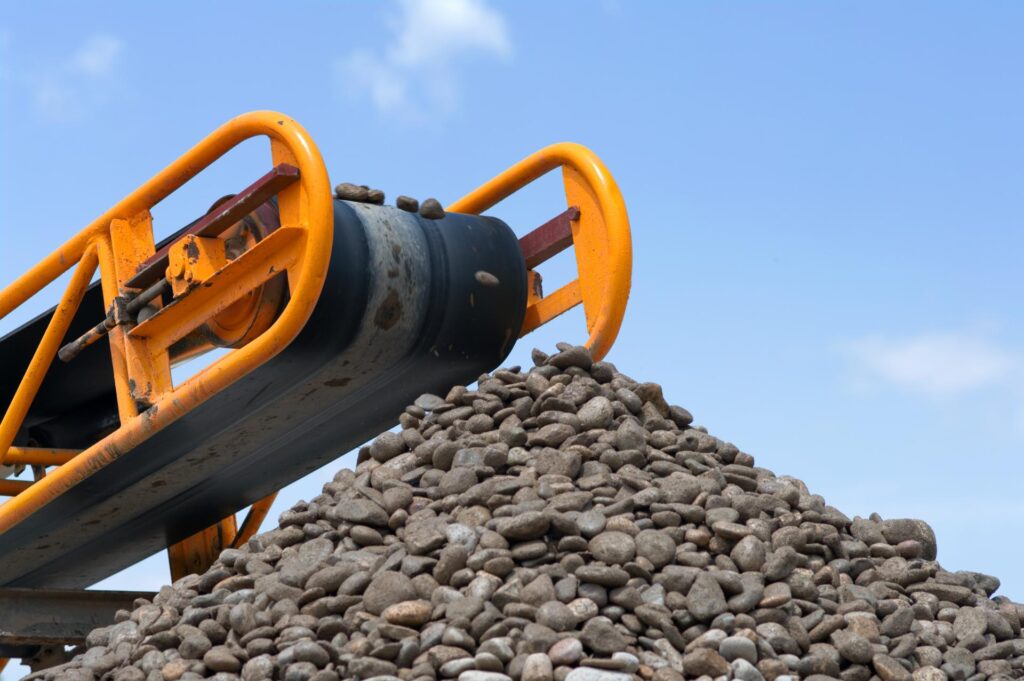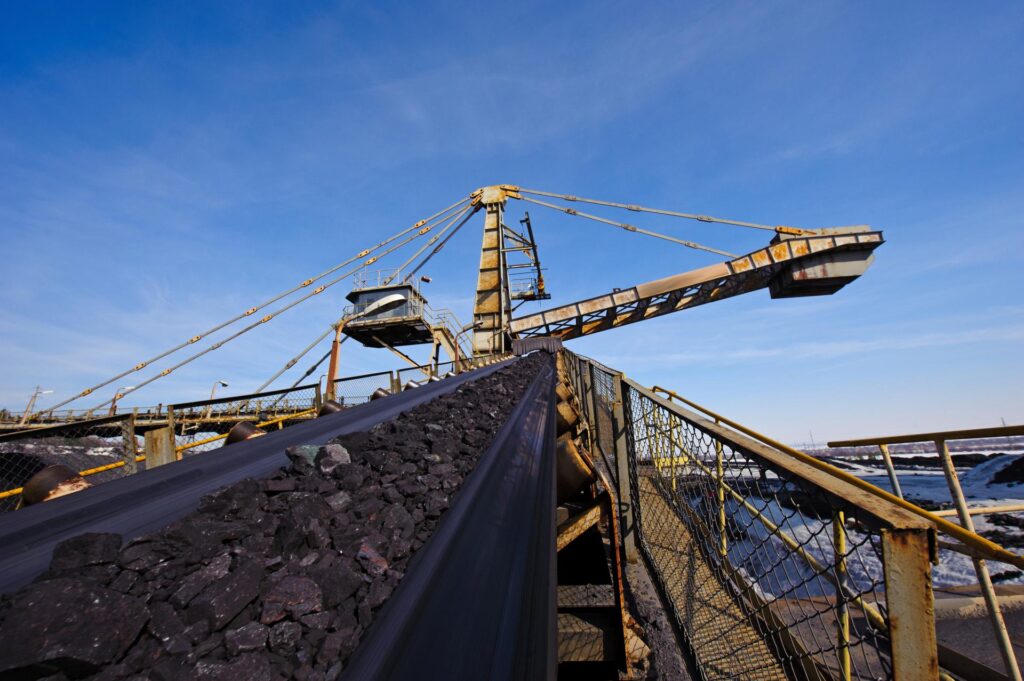Application
Rubber conveyor belts are used for transporting large quantities of bulk materials, as well as for individual items, packages, and finished products. They are used across nearly all industries, including mining, construction materials, agriculture, petrochemicals, etc.

Types
Composition
Rubber conveyor belts consist of the so-called “belt core” and a protective rubber layer.
Belt Core: The core is made of (EP) fabric consisting of longitudinally arranged polyester fibers with a nylon warp. Features include light weight, high tensile strength, limited elongation, good thermal resistance, high resistance to local loads, moisture, and the ability to adapt to “trough” conveyors.
For conveyor belts marked with ST (DIN 22131), the core consists of galvanized steel wires.


Rubber (Protective) Layer: The rubber layer of the belt protects it from contact with the conveyed material and wear caused by the rollers on the conveyor. The thickness of the top layer varies and increases with the tensile strength of the belt, while the bottom layer is somewhat thinner. The rubber layer meets chemical and mechanical resistance standards according to DIN 22102, DIN 22103, DIN 22118, DIN 53516, UNI 3783, UNI 5263, UNI 5420-84, and UNI 8007.
Technical Specifications
- Rubber conveyor belts are available in widths of 300, 400, 500, 600, 650, 800, 1000, 1200, 1400, 1600, 1800, and 2000 mm.